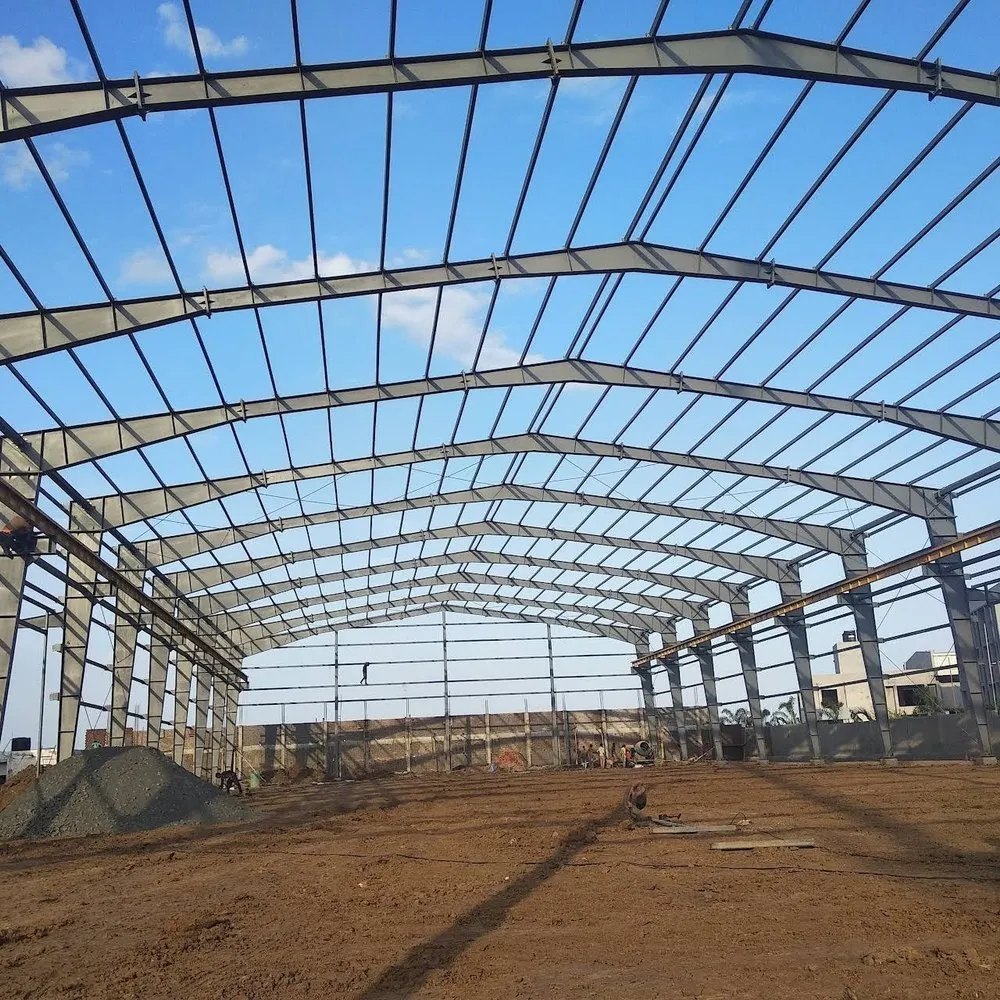
Trump Orders, Directives Show New Social Engineering and Face More Court Risks

The flurry of executive orders and directives by President Donald Trump and his newly confirmed cabinet chiefs to modify or cut Biden administration policies have some in the construction sector optimistic. But the actions also are disrupting key government functions with impacts feared for construction industry operations and costs.
Changing mandates cover everything from transportation and energy funding policies to tariffs on materials and bans on federal diversity, equity and inclusion rules extending to contractors. The status of rules and impacts of federal project award activity, firing of workers and Elon Musk’s unscripted government cost-cutting blitz remain unclear, and even troubling to many.
Court orders in recent weeks to pause administration moves to halt allocated funding are the beginning of more legal battle, despite Trump press secretary Karoline Leavitt’s statement that the White House “will continue to fight these battles in court, and we expect to be vindicated.” A final appeals court ruling—related to suits brought by 22 states, Washington, D.C., and two private groups—that is expected shortly is not likely to bring that result, and media and observers speculate on how or whether the administration will comply if ordered.
Pushing forward on policy, the administration announced on Feb. 14 yet another order to create its “national energy dominance council,” led by Interior Secretary Douglas Burgum and Energy Secretary Chris Wright and including U.S. Environmental Protection Agency chief Lee Zeldin, to centralize under closer White House control its plan for “ENERGY DOMINANCE,” as a government social media post exclaimed. As council chair, Burgum also can join meetings of the National Security Council.
The council’s 100-day mission is to push U.S. energy needs response primarily focused on fossil fuel, develop actions to increase its production, lure private sector investment and champion innovation over “totally unnecessary regulation,” it said.
Fossil fuel production reached record levels under President Joe Biden, says the Energy Information Administration, despite moves to cut drilling on public lands and water bodies.
In a Feb. 17 address to the UK Alliance for Responsible Citizenship, Wright termed Net Zero 2050 “a sinister goal,” The country’s Labour government elected last year under Prime Minister Keir Starmer aims to curtail fossil fuel in its power mix by 2030, by large scale use of renewables, particularly offshore wind.
The UK energy regulator announced Feb. 14 new reforms set to take effect this year to untangle gridlock in the national power grid that has hampered needed connection of renewable energy projects for years. The 2030 plan requires installed grid capacity to double over the next five years, said S&P Global.
Wright argued however that “the aggressive pursuit of [net zero] … has not delivered any benefits, but it’s delivered tremendous costs,” adding that “the world simply runs on hydrocarbons and for most of their uses we don’t have replacements.”
Big LNG Project Moves Forward
DOE’s Wright also issued Feb. 14 the first agency green light to export liquefied natural gas to non-free trade agreement countries since the Biden administration halted those in early 2024, a move reversed by court order later in the year. Approved was the proposed 9.5-million-ton-per-year Commonwealth LNG project in Cameron Parish, La. The Federal Energy Regulatory Commission also OK’ed a supplementary environmental impact review for the estimated $4.8-billion project, which is set to for final investment decision in September, with first production estimated in first quarter 2029. Technip Energies and Baker Hughes are two key project contractors. Private equity firm Kimmeridge acquired a 90% stake in the project last year.
“Because Commonwealth is a modular build, we view ourselves, as we look at where we are in the market, as some of the lowest-cost of a greenfield development and slightly higher than a brownfield development,” Kimmeridge Managing Partner Ben Dell told S&P Global in November. DOE also has extended to March 20 the comment period for the previously proposed DOE analysis of LNG export impacts.
In signing his “energy emergency” order, Trump also aired intent to resurrect the 124-mile Constitution gas pipeline project from Pennsylvania to New York that was abandoned by developer Williams Co. in 2020 when New York state officials blocked it over proposed water-quality impacts. In media comments last month, the president claimed the project would boost northeast state energy supply and cut prices by up to 70%. Williams Co. officials did not confirm if it would restart the project, according to Bloomberg.
EPA also said it expects to halt regulation of methane, a greenhouse gas released from leaking oil and gas equipment, while administrator Zeldin said he wants to claw back $20 billion approved by the Biden government for climate projects, particularly in “overburdened” communities. In a social media post, Zeldin said the funds were awarded in “a rush job with reduced oversight,” but some media say the claim lacks evidence.
Burgum has criticized renewable energy sources like wind and solar for not producing dispatchable power, with more permit restrictions expected. Despite negative political and economic impacts on renewable energy growth in recent years, it now accounts for more than 20% 0f U.S. power generated, about double what it was in 2010, says the U.S. Energy Information Administration. Natural gas grew to 43% from 24%
in 2010, the agency said.
Buyers will still be key. In its latest move for power supply, technology giant Microsoft said Feb. 10 it will buy nearly 400 MW of power from three new utility-scale solar projects it developed in Illinois and Texas with Volt Energy Utility, a minority-owned renewable energy developer. “It’s exciting when projects achieve commercial operations and begin generating clean energy in support of grid decarbonization,” said Kourtney Nelson, firm senior director of renewable energy procurement.
Bob Blue, CEO of Dominion Energy that is building the $10.7-billion Coastal Virginia Offshore Wind project, told investors in a 2024 company results call on Feb. 13 that Trump restrictions targeted at that clean energy sector would not impact the project that now is on track to have 2.6 GW of large wind turbines, 178 in number, installed by the end of 2026. “It’s homegrown. It helps promote American energy dominance,” he said.
Blue said any move to halt the project, seen by state Gov. Glenn Youngkin (R) as key to its surging power need as a data center hub, “would be the most inflationary action that could be taken with respect to energy in Virginia.”
Investment firm Stonepeak, which acquired last year a 50% share in the wind project, remains bullish on energy transition infrastructure, including wind, grid upgrades and carbon capture, CEO Michael Dorrall told investors on its own latest quarter earnings call, according to a report in Infrastructure Investor, that “the hardest thing for an investor is when goal posts keep moving.”
Transportation/Workforce Shifts
In his policy directive just after confirmation, Transportation Secretary Sean Duffy announced project funding shifts—including favoring states with higher birth and marriage rates, those “in compliance … with federal immigration enforcement, where possible,” those without vaccine or mask mandates and those pushing a user-pay strategy. Social cost of carbon analyses also are dropped from projects, which were targeted by conservatives for “social engineering.”
But DOT’s birth-rate provision also, “on its face, is social engineering,” said Connecticut Senate Democrat Richard Blumenthal. “It is patently discriminatory if you look at the numbers,” predicting courts will remove it when challenged. The American Roads & Transportation Builders Association supported an industry lawsuit against the cost of carbon rule—but voiced concern that the new birth-rate funding policy “could influence where infrastructure projects are funded based on demographic factors rather than need.”
Duffy, a former congressman and Fox News hot,, “seems unsure whether he wants a complete overhaul of USDOT programs or the speedy advancement of infrastructure projects,” said the Rail Passengers Association.
Related to workforce, Duffy said he rescinded the DOT’s DEI policies, as have other federal agencies, but the rules for government-wide federal contractors are not clear. “There could be legal repercussions and hefty penalties for crossing the line on diversity, equity and inclusion—a line the administration hasn’t clearly defined,” said Bloomberg Law on Feb. 13. “At the same time, existing contracts obligate these companies to maintain hiring policies they’ve been practicing for decades.”
Contractors have until April 21 to comply, with agencies needing to first clarify rules and contract terms, say attorneys at law firm Arnold & Porter, pertaining to any enforcement. The Trump order “does not purport to unilaterally modify existing government contracts, and it would present serious legal questions were it to try. But the uncertainty facing contractors is real,” for now.
Although the department has not yet outlined a move to reverse a Biden-era mandate for union-tilted labor agreements covering pay rates and jobsite rules for projects of $35 million or more, as the U.S Defense Dept. did this month, an industry coalition now seeks a Trump executive order to rescind the pacts government-wide.
With Republican leaders so far not crossing Trump on any major order provisions, the Senate is nearly finished in confirming his nominees, who included controversial hard-liner Russell Vought at the Office of Management and Budget. But the sudden shutdown Feb. 4 of the U.S. Agency for International Development—which manages a multibillion-dollar construction portfolio—has caused some bipartisan congressional upset over Vought’s role and Musk’s authority to intervene in federal agency staffing and funding reviews.
Ir is not clear how or whether either has influenced recent directives calling for 2,300 firings at the Interior Dept., about 2,000 at the Energy Dept. and 400 at EPA, among others, media reports said, with most classified as newly hired “probationary” employees. The Trump government will close EPA’s Office of Environmental Justice, placing 168 employees on administrative leave.
Tariffs: Real or Dealmaking?
Adding to the level of uncertainty ahead are Trump’s proposed tariffs, with the administration announcing on Feb. 13 the newest—”reciprocal” levies that would raise charges against a number of countries to what they charge the U.S. for thousands of products, with no effective date noted. Commerce Secretary Howard Lutnick and others are set to announce tariff details in an April 1 report, the White House said.
While original 25% levies on Canada and Mexico are paused until March 1, a 10% levy against China now is in effect. Sarah Martin, associate director of forecasting for Dodge Construction Network, says that with 70% of U.S. softwood lumber and gypsum imports sourced from North American neighbors, “nonresidential sector firms will see more vulnerability to supply chain disruptions and material shortages.”
Also at risk are needed power imports to border regions such as New York state, with Ontario and British Columbia threatening to restrict supply if tariffs take effect, according to a Feb. 11 S&P Global research note. “There are opportunities … to actually move away from the conversation about tariffs,” Canada energy minister Jonathan Wilkinson told a global energy conference in Washington earlier this month, reported by S&P Global.
Tariffs may also impact energy industry critical component costs, such as U.S. imports of electrical transmission transformers from Mexico, amid a current global shortage. “One option … is to focus on … working more closely on critical minerals and energy,” Wilkinson said, calling for a formal binational alliance since Canada is a major global supplier.
But a 10% tariff on China imports remains, generating retaliatory levies.
Trump also announced 25% tariffs on steel and aluminum late on Feb. 10, elevated from 10%, for all global exporters to the U.S., including allies Australia, the European Union, South Korea, Vietnam and Japan, effective March 12. China exported about 892,000 metric tons of finished steel to the U.S. in 2024, up 5.5% from 2023, according to sector research firm CEIC. But these accounted for 0.8% of China’s steel exports.
An EU official promised “firm and proportionate countermeasures,” but no retaliatory tariff has been detailed.
If tariffs move beyond immediate administration negotiating tactics, upward pressure on raw materials prices “will eventually translate into higher bid prices for construction and infrastructure projects,” says Macrina Wilkins, AGC senior research analyst. “It will take time for domestic producers to scale up to meet demand.”
Post a Comment
You must be logged in to post a comment.





